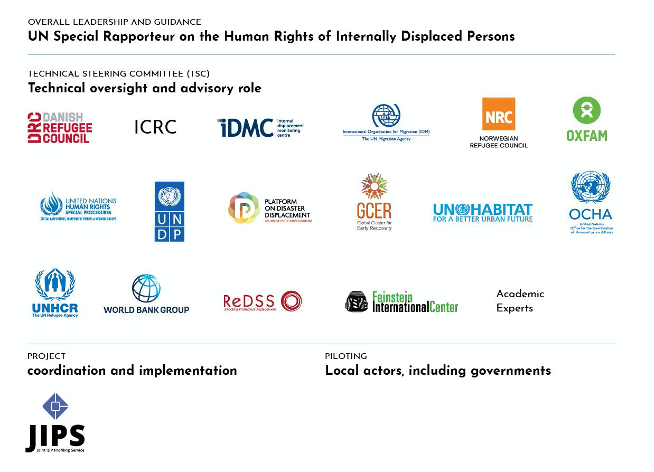Why measure durable solutions?
Displacement is a life-changing event. While the often-traumatic experience of displacement cannot be undone, internally displaced persons (IDPs) still need to be able to resume a normal life by achieving a durable solution.
As outlined in the 2010 IASC Framework on Durable Solutions for Internally Displaced Persons (IASC Framework), a durable solution is achieved when IDPs no longer have any displacement-related vulnerabilities and protection needs, and are able to enjoy their human rights without discrimination deriving from displacement. Importantly, as the IASC Framework precises, ”mere physical movement, namely returning to one’s home or place of habitual residence, moving to another part of the country or choosing to integrate locally, often does not amount to a durable solution.” The Guiding Principles on Internal Displacement outline the primary responsibilities of national authorities, as well as the complementary role of humanitarian and development actors, to assist them in this path.
Hence, achieving durable solutions to displacement — independently from the cause — is a gradual and long-term process. Measuring progress towards solutions can inform collective results for solutions-related policy, strategy, programming and advocacy, by providing baseline indicators in a given moment, outcome indicators for programming, and monitoring of progress over time towards solutions.
Hands-on tools
The Interagency Durable Solutions Indicator Library presents agreed-upon and statistically sound indicators that can be used to inform and measure durable solutions outcomes, in line with the IASC Framework. The indicator library is accompanied by an analysis guide, which describes how to utilise the library in a collaborative durable solutions analysis process, and a question bank, which translates the indicators into question modules to help jumpstart the design of a survey tool, as well as training materials (see resources section).
The tools are meant to be used collaboratively by national and local authorities, as well as other humanitarian, development and peace-building actors involved in an evidence-based joint response.They emphasise the comprehensive nature of durable solutions and the importance of understanding displaced persons’ priorities. The durable solutions indicators, analytical framework, and question bank can be used for different data collection approaches, including profiling, needs assessments, programmatic assessments, displacement tracking, as well as to inform local or national level monitoring frameworks.
A collaborative effort
In 2015, the Mandate of the UN Special Rapporteur on the human rights of Internally Displaced Persons initiated a multi-stakeholder project to operationalise the IASC Framework by developing a set of agreed-upon indicators and guidance for practical and comprehensive approaches to durable solutions analysis in internal displacement contexts.
The project was advised by a Technical Steering Committee comprising development and humanitarian actors, as well as relevant academic institutions. The members of the Technical Steering Committee provided technical oversight and thematic advice on their respective areas of expertise throughout the process. JIPS coordinated and implemented the project. Governments and local authorities were actively involved in the piloting phase and helped finalising the outputs for the project.

JIPS durable solutions – UN Special Rapporteur on the human rights of Internally Displaced Persons
